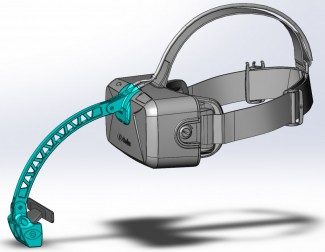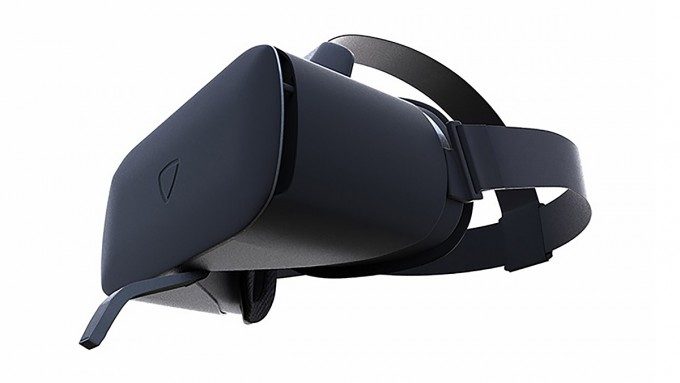Veeso, a recently launched Kickstarter project, is aiming to be the first to market with a mobile VR headset that tracks your face’s movement; a system that uses head-mounted infrared cameras to track both your eyes and mouth for a greater sense of presence in virtual reality.
The concept of using head-mounted cameras to track facial movement has been in development since the early ’90s, and although it later found practical application in the film and video game industries, giving animated characters a more human touch, it seems virtual reality is poised to bring technology to the consumer market in a big way.

After all, being able to smile and look someone in the eyes is one of the most human interactions that’s still sorely lacking in VR—something that will no doubt be an integral part of future headsets.
The Veeso team have built a functioning mobile VR headset prototype that promises to do just that by using two infrared cameras: an internal sensor capturing eyes and eyebrow movement, and second a sensor tracking the mouth/jaw. The completed headset promises to be wireless via a Bluetooth connection that sends data to the user’s iOS or Android smartphone and powered by an internal battery, as the current prototype relies an external source to power the system’s processor. And no, you won’t have to have little dots all over your face like Benedict Cumberbatch wore during the production of The Hobbit; the facial tracking system is considered ‘markerless’.
The headset is said to be ‘Cardboard-ready’, implying that it will rely both on Google Cardboard Store content as well as your phone’s internal orientation sensors to drive head tracking.

According to Veeso, “both the [facial] tracking technology and the avatar interpretation are still not perfect, and further work will be needed in order to have the technology be able to adapt to every typology of face; but we are having encouraging results, and with your support we will achieve the desired goal.”
The campaign has posted an $80,000 initial funding goal, and is offering headsets for between $70-100 dollars depending on how early you back. Project creators are promising ten custom-built applications and games delivered to backers in the first 6 months after the estimated Dec 2016 delivery date.
The project will also offer access to the Veeso SDK, docs, samples, engine integration and developer forums for backers specifically looking to develop for the mobile headset.
Our concerns lie with the robustness of tracking, because small glitches in the movement of someone’s virtual face can lead to off-putting results. Veeso will need to ensure a high level of tracking performance and put in safeguards to prevent awkward twitches or contortions of users virtual faces.
There are also some definite drawbacks to any headset that uses your smartphone’s own inertial-measurement unit (IMU) for head tracking like all current Google Cardboard-enabled devices, and Veeso is apparently no exception. If all the documentation we’ve seen from the Kickstarter can be trusted, it’s this writer’s firm belief that Veeso’s tech would be better served in a headset with high accuracy, low-latency sensors like Gear VR or the upcoming Google Daydream project (which disqualifies most, if not all existing phones).
That said, Veeso is the first mobile VR headset we’ve seen offering facial motion tracking, and there’s no denying that there’s an excitement factor in being able to look someone in the eye, smile and say “hello,” in a social VR environment.






